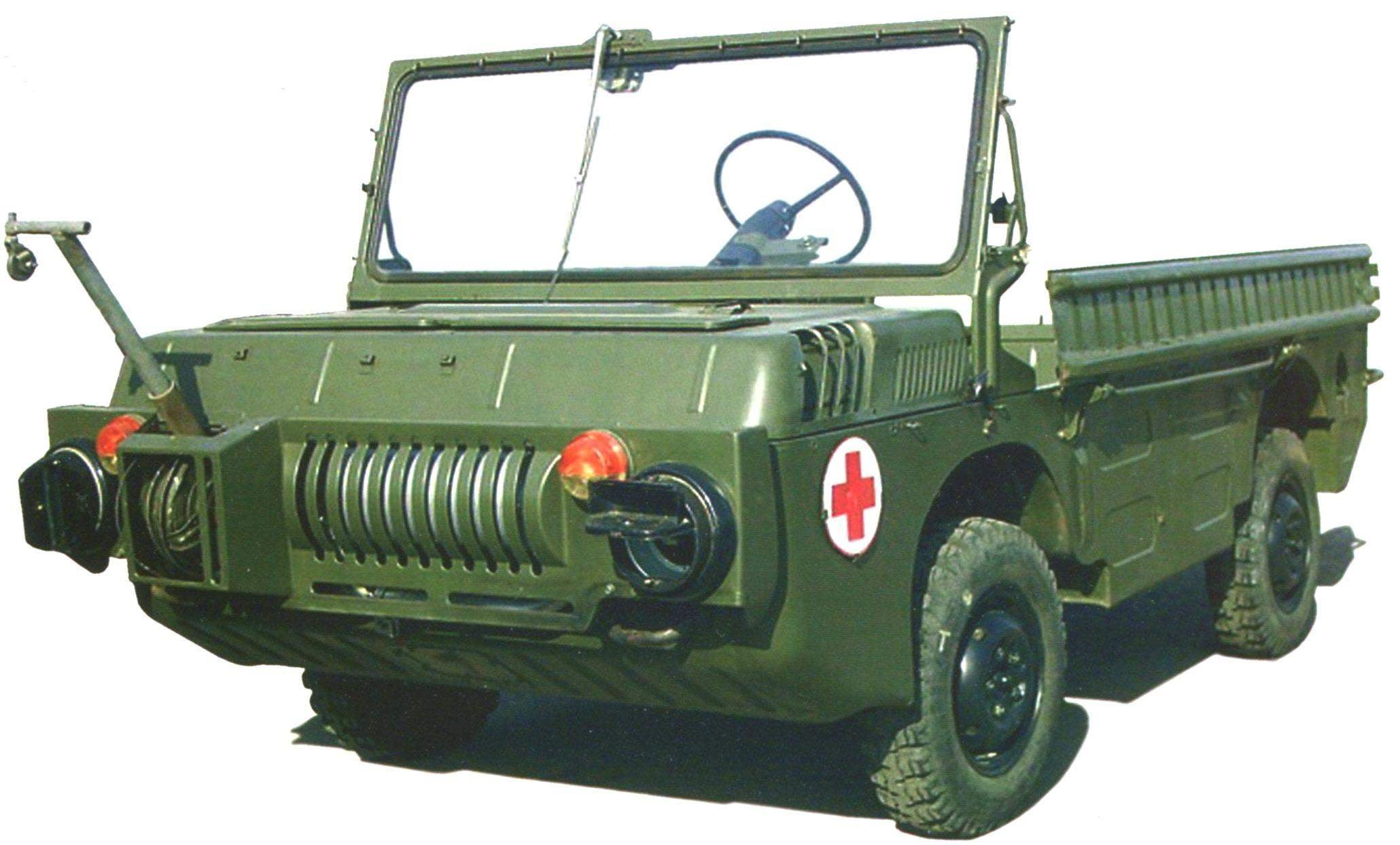When launching or exiting the water to use light metal ladders in the stowed position they were fixed on the sides of the hull of the vehicle. In the front of the machine housed a winch with a cable length of 100 m, developed its force of 150 kgf. Wonder what use such a low power winch for self-recovery is not recommended – the task assigned to it, was to evacuate the wounded from the front edge of the zone of fire influence of the enemy, to TPK on special trays.
In 1961, after the completion of the testing of amphibious all-terrain vehicle US-049А was recommended for serial production in Lutsk mechanical plant (in 1967 the company received the name LUAZ – Lutsk automobile plant). Well, IR-bitscope motorcycle plant, which was supposed to deploy the release of TPK, it was decided profile do not change.
The first production prototypes of the WPK was released in 1965 in Zaporizhia automobile plant under the name ZAZ 967. In 1969 began mass production of the vehicle at Lutsk automobile plant, and in the same year the machine was put into service.
Almost simultaneously with military Transporter developed civil version-LUAZ-969. Its chassis is almost entirely based on the nodes TPK – its equipped with the same independent torsion bar suspension, same axles with onboard reducers, the same on the front, “Zaporozhye” motor.
The layout of the conveyor LUAZ-967
Conveyor LUAZ-967 was a good swim – in motion brought it’s own wheels
The main task of the WPK – the evacuation of the wounded from the zone of fire influence of the enemy
ЛуА3-969M – civil modification TPK
The development of a civilian jeep was first conducted in the US, and then at the Zaporozhye automobile plant under the leadership of B. M. Fitterman. That he belonged to the original solution suspension ZAZ-969, based on the combination of extremely compact independent torsion suspension increases ground clearance reduction gears.
Located the front of power unit, in addition to the engine part gear box and main gear, was initially based on the V-shaped four-cylinder 23-horsepower engine MeMZ-966, the same, which was equipped with a “humpbacked” “Zaporozhets”, and later received the motors 27, 30 and 37 HP
Transmission is rigidly connected with the rear axle tube, inside which held the drive shaft of the main transmission. The connection, if necessary, rear axle reduction gearing and a locking rear differential was carried out by the driver. Paonessa body structure will significantly lighten the car, which also favored the patency of the vehicle.
Torque transmission on the rear axle was carried out using u-joints (from the wheel gear) and the moving crackers (from the differential). All wheel suspension – independent, torsion bar.
Stroke when you swing the rear wheels up to 100 mm, however, for vehicle-ATV this is quite enough.
Compact car enjoyed considerable demand in rural areas – it cost a little more expensive than “Zaporozhets”, and cross left behind as the Niva and the GAZ-69.
Technical characteristics of the conveyor of the front edge Lu AZ-967
Dimensions, mm:
-length…………………………………………..3682
-width………………………………………..1712
– height (without awning)………………………..1600
Base, mm………………………………………….1800
Front/rear wheel track, mm……….. 1325/1320
Ground clearance, mm……………………..285
Turning radius, m……………………………….5
Weight, kg:
– in running order………………950
– complete………………………………………….1350
Load capacity, kg……………………….320
Weight of towed trailer, kg……….300
The number of seats…………………………………………..3
Engine:
-type……………………………………MeMZ-967А
– number of cylinders……………………….4
– working volume, l…………………………1,197
– power, HP…………………………………..37
Amount of gear……………………………..4
Fuel tank capacity, l………………..34
Maximum speed, km/h:
– on the highway………………………………………….75
– afloat……………………………………….3 -4
Control fuel consumption
at a speed of 40 km/h, l/100 km……………10
 Came to the end of the Second world war, however, to stop the developing course of the military “machine” was not easy. The fighting was over, however, the industry is yesterday’s allies continued to produce military equipment and to create new types of weapons. One of the reasons for this were civil and national-liberation war in East and South-East Asia, generously sponsored by on the one hand the United States of America, and on the other by the Soviet Union. While testing a testing ground for the warring parties supply of military equipment were Korea and Vietnam.
Came to the end of the Second world war, however, to stop the developing course of the military “machine” was not easy. The fighting was over, however, the industry is yesterday’s allies continued to produce military equipment and to create new types of weapons. One of the reasons for this were civil and national-liberation war in East and South-East Asia, generously sponsored by on the one hand the United States of America, and on the other by the Soviet Union. While testing a testing ground for the warring parties supply of military equipment were Korea and Vietnam.